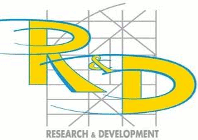Most company departments have repeatedly been subjected to reorganisations, downsizings, rightsizings and rationalisations in order to squeeze increasingly more operational efficiency out of their business.
R&D operations, however, have largely avoided these major overhauls. For many executives, R&D has remained a ‘black box’ which consumes a fixed investment based on a proportion of company revenues.
In return, the company receives new products that potentially drive future growth. So it’s understandable that they have been hesitant to make changes or cuts. However, executives are increasingly demanding transparency. They want to understand what’s inside the black box.
Part of the problem has been that we rarely look beyond the size of the R&D investment. Although we can look at published R&D statistics, often they don’t say anything about how much of the R&D spend contributes towards generating profits.

Keith Nichols of independent research and analysis company Cambashi
This is confirmed in recent studies which state that, on average, only 28 per cent of R&D projects find their way into product development, and only half of these products reach profitability over their life.
This means that around 86 per cent of R&D investment typically does not directly contribute towards profits. If leveraging profits from R&D investments is the real focus of these companies, then what can be done to achieve these elusive profits?
Taken it as given that a highly tuned development execution process is currently in place, let’s look at some of the key areas which can influence the amount of profitability.
The ‘R’ and the ‘D’ need to be intimately linked to the product strategy
Many company research projects end up having little influence on the company product strategy.
Often, they find their way into side projects which generate secondary interest and modest income. This can be a distraction to the main business and can take valuable effort away from providing highly innovative mainstream products.
R&D activities need to be intimately linked to a company product strategy. This will lay out the future customer changes and needs, when these are likely to occur, and highlight what technologies are coming along that may provide breakthroughs.
With these in mind, a product roadmap can be produced to show how emerging technologies can provide innovative features for products to meet evolving customer needs.
Every company needs its own roadmap so that it knows where it is going and what possibilities are likely. If a company roadmap doesn’t exist, the seeds of good research can often fall on stony ground.
Direct R&D effort towards new ideas rather than enhancing existing products
Too often, companies focus R&D and product development based on their existing product business.
This may be because it’s easier to enhance an existing product rather than to create a highly innovative alternative for new markets. Further development for many current products follows this route which leads to much lower profits but also much lower risk.
Apple and Microsoft highlight this situation well. In 2010 both companies had similar revenues with Apple investing around 2 per cent of its revenues in R&D compared to Microsoft’s 12 to 13 per cent.
One might expect that by investing more, Microsoft would have leveraged greater revenue and profitability in the next couple of years.
In fact, the opposite happened. Apple grew 55 per cent between 2010-12, whilst over the same period, Microsoft displayed a modest growth of 7 per cent per annum and received a flood of complaints from angry shareholders who were concerned about the extent of R&D investment with little new to show.
On closer examination, Microsoft had been investing huge amounts of its R&D into simply defending the PC business while the technology marketplace rapidly shifted to new platforms and opened up new lucrative opportunities, like mobile devices, cloud-based applications and data access, and even gaming consoles.
Even if your business is different, you don’t want to end up investing disproportionate amounts in yesterday’s solutions. This approach did not work for the likes of Kodak, Polaroid and Xerox, and they experienced a similar fate, or worse.
Don’t tar every operation with the same brush
For many, allocation of R&D investment is usually a less than eff ective process. With some exceptions, the process would usually go like this:
In the months leading up to a new fi nancial year, group executives would receive a growing list of R&D submissions from its operations. The total would often add up to more than the available pool of money.
In the traditional manner, the R&D pool of money was split in proportion to the budgeted revenue for each operation. With changing markets and the rapid emergence of new opportunities, this approach to allocating R&D investment was starting to stunt the growth of some of these internal operations.
This was experienced by a heavy power equipment manufacturer who identifi ed major growth opportunities in its market. The subsidiary concerned was a relatively small operation that had up to two years to get its new innovative products ready before the market matured.
But because they received a small R&D allocation based on their current small revenue size, they could do very little to invest the right level of R&D.
At the same time other well established operations were putting forward strong cases for a share of the same R&D funds.
When an application was submitted for additional investment, based on a solid business case, it was up against some of the established operations with a high sales track record. So, the decision was taken to support the latter rather than a strong business case that could provide compelling results and profit in future based on high risk and little history.
The heavy power equipment market continued to grow. If that small subsidiary had been given the opportunity to increase its investment in new products at that time, it might have grown larger than any of the other company divisions whilst supporting substantial profits.
Unfortunately, this small subsidiary remained small, and today it concentrates on highly customised, low margin contracts. This, and similar operations to it are using their limited R&D spend to ‘tinker around and face-lift’ their existing products.
Without the potential of new products, they hope to secure mainly replacement orders and a small number of heavily customised products with low margins.
Duplication of R&D is eliminated
With little visibility between the different R&D locations within the group, it was often difficult to ensure that work was not duplicated.
Subsidiaries developed their own product technologies and innovations in a disjointed manner. As these R&D operations were not transparent to the business and to each other, there was no opportunity to work together and share resources and expertise. Referring back to Apple Inc., it used one R&D centre compared to Microsoft who has around 30.
In one part of a large UK engineering company, 14 per cent of the bought-in components and technologies they were using had already been designed, manufactured, and sold by another subsidiary.
Further duplication was identifi ed in which 12 per cent of development effort was being unnecessarily duplicated in a different division.
There was little sign of a corporate-wide product strategy that focused on maximising the return on the overall R&D.
It was not only fragmented, but duplication and investment was frequently misaligned to the market opportunities.
Calculating the return on R&D
Although there is a great deal of debate as to which is the best way to measure a return on R&D, a number of sources have used the formula – ‘return on research capital (RORC)’ as a reliable measure for comparison.
It takes the current year’s gross profit and divides it by the previous year’s R&D expenditure. The significance of this ratio is that it measures how many units of return have been achieved from one unit of investment.
For example, in 2012, Apple had an RORC of 28.3 whilst Microsoft had a ratio of 2.4. These figures highlight the substantial advantage that Apple attained in generating profi ts from its R&D spends.
Way forward
This article touches on some of the key challenges that face companies in getting a better return on their R&D.
There is no doubt that R&D activity is a source of innovation which relates to profit creation. In a great deal of companies, it still remains a ‘black-box’ in which ideas go in and completed research comes out.
Even though R&D output may be considered as innovative and advanced, on average only 14 per cent actually contributes towards profits. This can only be put down to a significant lack of integration into the business through a company-wide road map that links research topics to planned product developments.
By addressing this disconnect more companies will start to become effective in generating a greater return on R&D.
How to generate a greater return from Research & Development investments
Default






